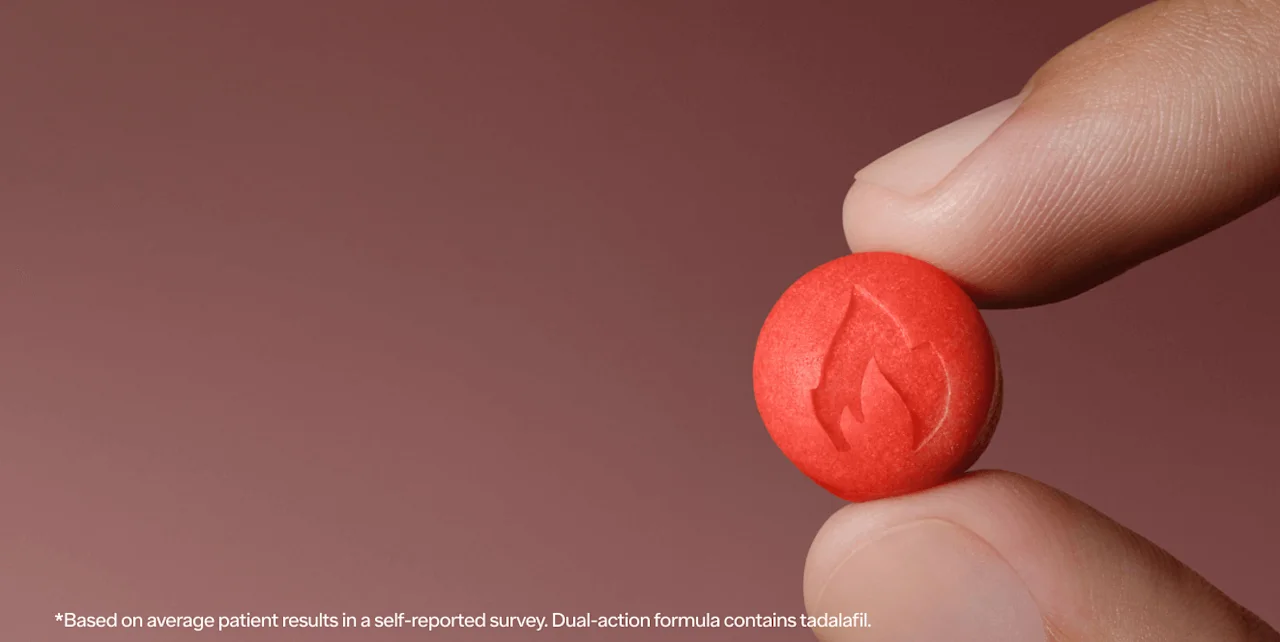Here's what we'll cover
Here's what we'll cover
Here's what we'll cover
A lot of men worry that their penises are smaller than average. Statistically speaking, the vast majority of them are absolutely wrong: Over 90% of men are within one inch of the average male penis size. But in rare cases, some men have an unusually small penis, a condition known as a micropenis.
What is a micropenis?
Defining “too big” or “too small” still hasn’t been firmly nailed down, so all we can do is look at statistics. Statistically speaking, most guys have a normal penis. A 2015 review found that the average erect penis size is 5.17 inches long (13.12 cm). And the average flaccid (soft) penis is 3.6 inches (9.1 cm) (Veale, 2015).
A micropenis (or microphallus) is a penis that is significantly smaller than the average penis size—smaller than 2.04 in (5.2 cm) when flaccid (Veale, 2015).
This condition is usually diagnosed during a physical examination at birth or in infancy. Some men may believe they have a micropenis, even though that’s likely not the case. Micropenises are actually very rare. Between 1997 and 2000, only 0.015 percent (1.5 in 10,000 births) of boys in the United States were born with micropenises (Gaspari, 2012).
What causes a micropenis?
A micropenis can happen for a few different reasons. In most cases, something is wrong with certain hormones involved in male genital development.
Usually, testosterone deficiency in utero plays a big role. There are rare cases where the male fetus’s brain fails to communicate properly with the testicles (where testosterone is made). This miscommunication means that testosterone levels stay low, which doesn’t allow the penis to grow properly during pregnancy (and later, in puberty) (Kim, 2011).
There’s limited evidence that a fetus could develop a micropenis if its mother is exposed to certain chemicals during pregnancy, but more research is needed (Gaspari, 2012). In many cases, we just don’t know what causes a person to have a micropenis.
What else could cause a small penis?
Micropenises are rare, and in many cases, what appears to be a small penis may not technically qualify as a micropenis. Some instances of apparent micropenis are actually what experts call a “buried penis”—meaning that fat or skin from the scrotum, abdomen, or thigh buries the penis, making it less visible despite it not being unusual in size (Cohen, 2021)
In many cases, a buried penis is already present at birth, but in some cases it may occur later on in adulthood. In men with excess body fat—especially around the stomach—the penis may be less visible because of fat pads surrounding the penis (King, 2013).
Micropenis treatments
There are several treatment options for micropenis. Experts say the best results happen when treatment is started early and before puberty. A primary care doctor may refer a child with a micropenis to a pediatric endocrinologist (a hormone expert) or pediatric urologist. Blood tests can help figure out if there’s a known cause of the micropenis, and which treatments are most appropriate.
In an infant or child (before puberty) with a micropenis, a healthcare provider may prescribe hormone therapy in the form of testosterone treatment (injections or a gel applied to the skin). According to some research, the penis will grow with testosterone treatment in many infants, but it’s not clear yet if the growth will continue during puberty (Tsang, 2010).
In some cases, healthcare providers may also recommend surgery, called a phalloplasty, where a surgeon takes flaps of skin from elsewhere on the body to enlarge the penis. These procedures are more common in adolescents and adults than in infants and young children, because they come with risks (Rashid, 2013).
Does size matter?
Penetration and penis length are far from the be-all, end-all of a great sex life.
If you have a penis that's smaller than normal, keep in mind that you can still enjoy intercourse because most nerve endings in the penis that provide pleasurable sensations are right at the tip. If you’re having vaginal sex, it’s also important to keep in mind that many women climax from direct stimulation of the clitoris via oral sex, manual stimulation, or toys, not necessarily from deep penis penetration (Herbenick, 2017).
DISCLAIMER
If you have any medical questions or concerns, please talk to your healthcare provider. The articles on Health Guide are underpinned by peer-reviewed research and information drawn from medical societies and governmental agencies. However, they are not a substitute for professional medical advice, diagnosis, or treatment.
References
Cohen P. R. (2021). Adult acquired buried penis: a hidden problem in obese men. Cureus, 13 (2), e13067. doi: 10.7759/cureus.13067. Retrieved from https://pubmed.ncbi.nlm.nih.gov/33680609/
Gaspari, L., Sampaio, D. R., Paris, F., Audran, F., Orsini, M., Neto, J. B., & Sultan, C. (2012). High prevalence of micropenis in 2710 male newborns from an intensive-use pesticide area of Northeastern Brazil. International Journal of Andrology, 35 (3), 253–264. Retrieved from https://pubmed.ncbi.nlm.nih.gov/22372605/
Grant, D. B., & Dillon, M. J. (1975). Micropenis associated with testicular agenesis. Archives of Disease in Childhood , 50 (3), 247–249. doi: 10.1136/adc.50.3.247. Retrieved from https://www.ncbi.nlm.nih.gov/pmc/articles/PMC1544513/
Herbenick, D., Tsung-Chieh, J. F., Arter, J., Sanders, S. A., & Dodge, B. (2018). Women's experiences with genital touching, sexual pleasure, and orgasm: results from a U.S. Probability sample of women ages 18 to 94. Journal of Sex & Marital Therapy, 44 :2, 201-212. doi: 10.1080/0092623X.2017.1346530. Retrieved from https://www.tandfonline.com/doi/abs/10.1080/0092623X.2017.1346530?journalCode=usmt20
Kim, S. O., Ryu, K. H., Hwang, I. S., Jung, S. I., Oh, K. J., & Park, K. (2011). Penile growth in response to human chorionic gonadotropin (HCG) treatment in patients with idiopathic hypogonadotrophic hypogonadism. Chonnam Medical Journal , 47 (1), 39–42. doi: 10.4068/cmj.2011.47.1.39. Retrieved from https://www.ncbi.nlm.nih.gov/pmc/articles/PMC3214853/
King, I. C., Tahir, A., Ramanathan, C., & Siddiqui, H. (2013). Buried penis: evaluation of outcomes in children and adults, modification of a unified treatment algorithm, and review of the literature. ISRN Urology , 2013 , 109349. doi: 10.1155/2013/109349. Retrieved from https://pubmed.ncbi.nlm.nih.gov/24490087/
Levy, J. B. & Husmann, D. A. (1996). Micropenis secondary to growth hormone deficiency: does treatment with growth hormone alone result in adequate penile growth?. The Journal of Urology , 156 (1), 214–216. doi: 10.1016/s0022-5347(01)66003-8. Retrieved from https://www.ncbi.nlm.nih.gov/pubmed/8648808
Rashid, M., & Tamimy, M. S. (2013). Phalloplasty: The dream and the reality. Indian Journal of Plastic Surgery: Official Publication of the Association of Plastic Surgeons of India , 46 (2), 283–293. doi: 10.4103/0970-0358.118606. Retrieved from https://www.ncbi.nlm.nih.gov/pmc/articles/PMC3901910/
Srinivasan, A. K., Palmer, L. S., & Palmer, J. S. (2011). Inconspicuous penis. The Scientific World Journal , 11 , 2559–2564. doi: 10.1100/2011/238519. Retrieved from https://www.ncbi.nlm.nih.gov/pmc/articles/PMC3253616/
Tsang, S. (2010). When Size Matters: A Clinical Review of Pathological Micropenis. Journal of Pediatric Health Care , 24 (4), 231–240. doi: 10.1016/j.pedhc.2009.05.001 Retrieved from https://linkinghub.elsevier.com/retrieve/pii/S0891-5245(09)00140-0
Veale, D., Miles, S., Bramley, S., Muir, G., & Hodsoll, J. (2015). Am I normal? A systematic review and construction of nomograms for flaccid and erect penis length and circumference in up to 15 521 men. BJU International, 115 (6), 978–986. doi: 10.1111/bju.13010. Retrieved from https://pubmed.ncbi.nlm.nih.gov/25487360/













